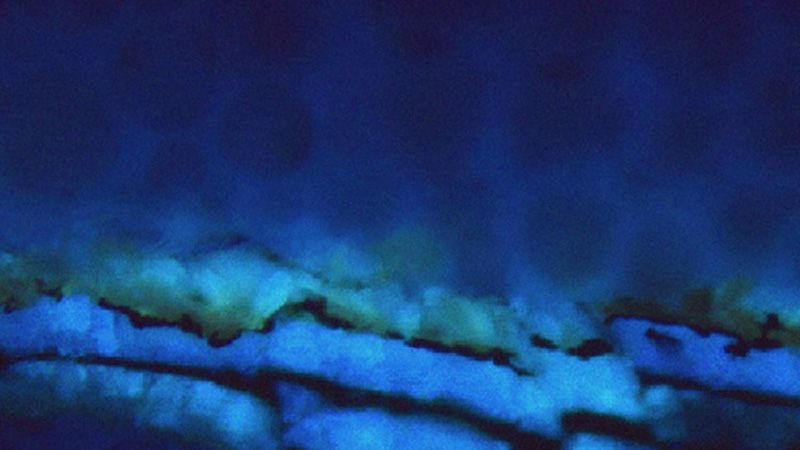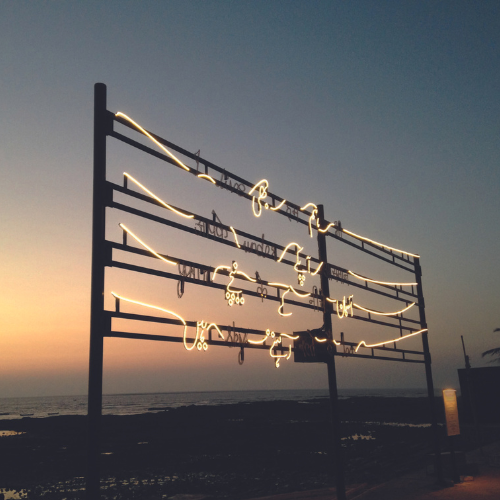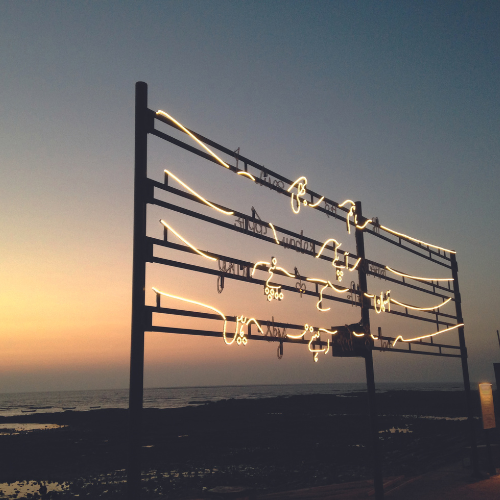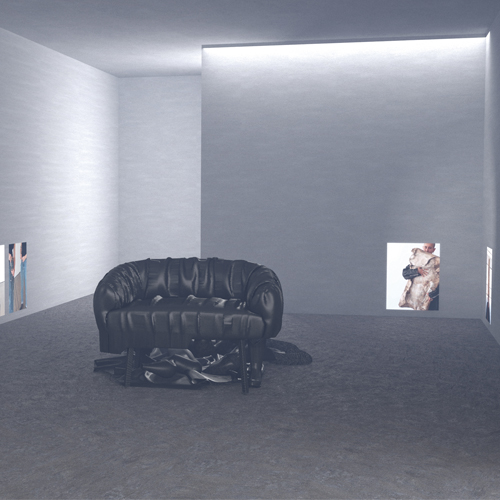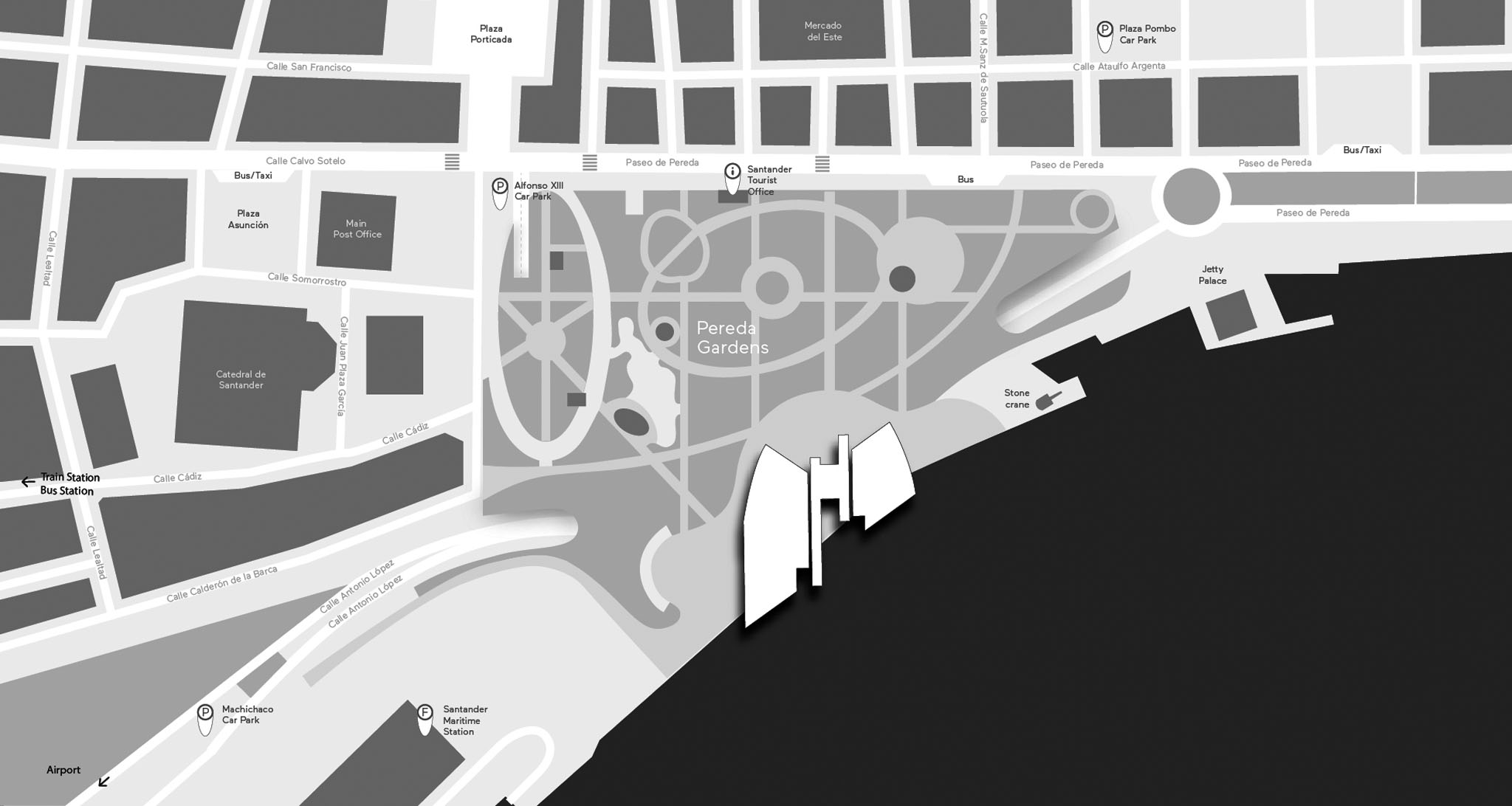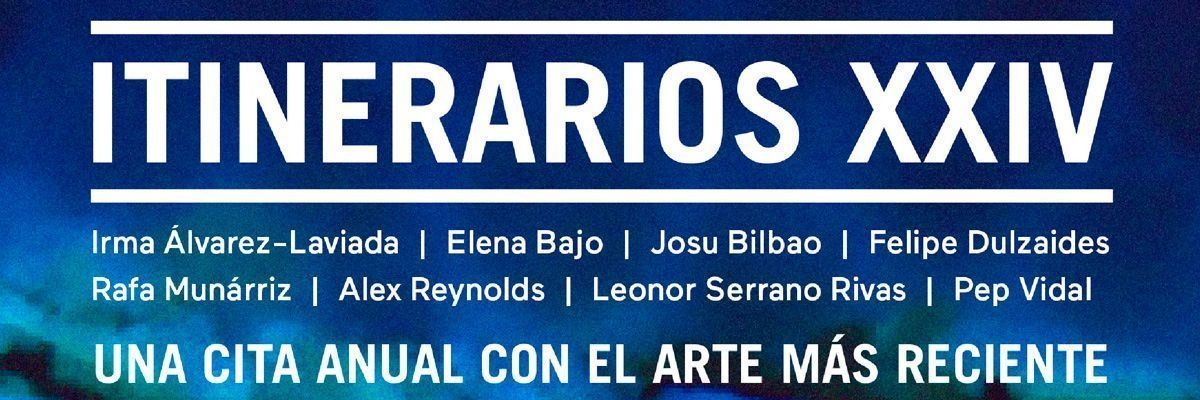
ITINERARIOS XXIV: A SHOWCASE OF SOME OF THE MOST RECENT TRENDS IN CONTEMPORARY ART
- The group show Itinerarios XXIV brings together the work of eight artists who trespass the boundaries of language to narrate the invisible, the inarticulate and the indeterminable.
- Irma Álvarez-Laviada, Elena Bajo, Josu Bilbao, Felipe Dulzaides, Rafa Munárriz, Alex Reynolds, Leonor Serrano Rivas and Pep Vidal offer a snapshot of the latest trends in art.
Centro Botín gets its 2018 programme off to a start with Itinerarios XXIV, from 13 March to 3 June. This exhibition features the work of the eight artists selected in the XXIV Call for Fundación Botín Visual Arts Grants, from the total of 703 applications received from 53 different countries worldwide by a jury comprising Ibon Aranberri, Lorena Martínez de Corral, Bárbara Rodríguez Muñoz and Wilfredo Prieto.
Irma Álvarez-Laviada (Gijón, 1978), Elena Bajo (Madrid, 1976), Josu Bilbao (Bermeo, Vizcaya, 1978), Felipe Dulzaides (Havana, Cuba, 1965), Rafa Munárriz (Tudela, Navarra, 1990), Alex Reynolds (Bilbao, 1978), Leonor Serrano Rivas (Malaga, 1986) and Pep Vidal (Tarrasa, 1980) are the artists included in the show, whose creations cut across the boundaries of conventional language in order to narrate the invisible, the inarticulate and the unsayable, and serve as a kind of cross-section of what is happening in art at the moment. Made in a variety of disciplines and locations, the works will also be featured in a catalogue published by Fundación Botín.
According to Benjamin Weil, the exhibition curator and artistic director of Centro Botín, in each new edition of Itinerarios “one can decipher synergies in the concerns as well as in the operating principles of the artists who exhibit together.” In this regard, he underscores that in this 24th edition, the selected artists share a common concern for the issue of space as an essential component of their work, and the need for a real-time physical experience; and they do so “in a day and age when a growing part of one’s time is spent in front of screens, which serve as mediators as much as they function as communication tools.”
For Centro Botín’s artistic director and curator, this notable interest in the use of space as a key element in their work, also gives rise to a reflection on what exactly reality means today and how the boundaries between here and there are increasingly more blurred.
To this end, in the exhibition, time and space become “become key elements to unfold artistic proposals that ‘re-stage’ fragments of the real which may otherwise have gone unnoticed or overlooked”, Weil argues, before adding that “sharing of the common space of the exhibition also brings together a dialogue between the existing projects. The proximity of some concerns is revealed, and the exhibition thus provides a good perspective on the most recent trends in contemporary art.”
ITINERARIOS XXIV – ARTISTS
Irma Álvarez-Laviada (Gijón, 1978). Reversibility and Utopia
The artist from Asturias focuses her multidisciplinary project on the obsession with material and the conception of the reversibility of time in relation with the dynamics of appropriation.
For her project Reversibility and Utopia, Irma Álvarez-Laviada undertook an art residency at the Instituto del Patrimonio Cultural de España (Spanish Cultural Heritage Institute) chronicling the process of restoration of José de Ribera’s Ecce Homo. The Museum conservators, equipped with microscopes, scalpels and chemical products, eliminate everything that “is not Ribera” from the canvas, thus affecting the unity of the work. Through a number of works in video, photography and installation informed by this process, the artist created a series of pieces giving visual form to the recording, cataloguing and erasure of information and in consequence articulating, in the artist’s words, “the necessary unfinishedness of works of art.”
In the six-screen video in loop Descomposición del Aura: Ribera (Decomposing the Aura: Ribera) one can see the hands of the restorer sheathed in blue latex gloves going about this aggressive process. The residues —added layer by layer during successive restorations of the painting— range from brownish-grey to earth colours or bluish tones and are presented inside urns in the exhibition hall, reminding us that these added materials were once contemplated by the spectator as part of the “original” by Ribera.
At the same time, Álvarez-Laviada presents twelve digital photographs resulting from the chemical analysis of elements of Ecce Homo. Captured by cameras connected to the microscope, these abstract images of vibrant colours and reminiscent of the mineral world, evoke an atomised representation of the work in which the composition of the original is made up of thousands of new works.
Elena Bajo (Madrid, 1976). Urania’s Mirror
Bajo’s interdisciplinary project examines the environmental and social impact that the economies of exploitation have on the land and on communities, especially in some places in Latin America. At once, she explores the voices and strategies of resistance employed by indigenous societies to decolonise not only the territory but also language and thought.
Urania’s Mirror (The Owl of Minerva Only Flies at Dusk) focuses on an intellectual and emotional investigation of the impact of a Spanish wind power megaproject in the Istmo de Tehuantepec in Oaxaca, Mexico, the land of the Zapotec people. Submerging herself in their cosmology and customs in order to connect the roots of their ancestral knowledge with current-day strategies of resistance, the artist interviewed academics and activists; she took part in shaman ceremonies, she sowed non-contaminated native wheat with Nauatl families and visited the steel and cement giants which impose themselves —visually, sonically and chemically— on their once fertile landscape.
The end results capture, on one hand, the violence inflicted on all kinds of life that surround the wind turbines: owls and crows, the sacred birds of Zapotec cosmology, literally explode as a consequence of the noise emitted by the turbines; the cows “dance” on their pastureland in order to avoid electrical currents; subsistence agriculture is wiped out. On the other hand, they question the optimism that surrounds projects which call themselves “green”: dirty energies like oil are used in the construction of wind farms, their engines require radioactive components, which sometimes leak into the land, and the steel blades are rendered obsolete in fifteen years, ending up in toxic cemeteries.
Josu Bilbao (Bermeo, Vizcaya, 1978). esàk-esà
The Basque word of the title could be defined as a kind of emotional release that refers directly to spatial notions. Understanding processes of sculpture as a series of relationships and openings or “a gymnastics of space in expansion,” Bilbao gradually gives body to the form, by organising on the ground objects and remains of found objects that help him to realise “what the problem is made of.” Pieces of rusted metal, bits of plastic, MDF boards, canvas, plants, clumps of earth, cement or sand, are all co-opted into the task of enquiring about the capacity of artistic forms to negate the current Western paradigm, which the artist sees as a loss, or cession, of space to convention, literalness and destruction.
Conscious of how we are subjected to an internalisation of the hegemonic through ordinary language and the normative artistic discourse, the artist undertakes an affective and intimate exploration of the exhibition space in dialogue with the material he introduces in it. In this way, the improvised sculptural whole outlines a process of unlearning, of decolonisation of the space and finally of oneself; giving a place to that which, up until then, did not exist while giving space to himself. Following on from his interest in the individual reality that makes each language current, Bilbao experiments through sculpture with the potential of the dying languages from oral traditions to contribute to the global panorama. A problematic and unresolved bond that enables him to advance without forcing formalisations, inventing the methodology to suit what he is after.
Felipe Dulzaides (Havana, Cuba, 1965). Deja tu tono en el mensaje (Leave your tone after the message)
In his work, Dulzaides investigates the way in which we are affected by poetry and poetic experience. To this end, in the project Deja tu tono en el mensaje he proposes a series of interventions in the rich soundscape of the city of Havana, using the individual melodies of each amolador, the name for scissors and knife sharpeners in Cuba who ply their trade on the streets of the city on their bicycles.
In Havana today there are only 27 remaining amoladores. They live in Santa Catalina, an improvised neighbourhood of self-constructed houses without any kind of urban regulation. The amoladores travel the city streets on special bicycles equipped with a rotating stone for sharpening knives and scissors.
They have become an integral part of the soundscape of Havana, intertwining their poetic melodies with the accidental sounds of the sharpening and of the street.
Influenced since childhood by the world of improvised music and poetry —his father was the celebrated Cuban jazz musician Felipe Dulzaides and his aunt and uncle, Fina García Marruz and Eliseo Diego, were poets—Felipe Dulzaides has created a body of work consisting of photo documentation, video and painting, always based on the experiences of the amoladores.
The video Lírica de calle orchestrates a musical dialogue between the different ranges of melodies of the amoladores and professional jazz musicians in Havana, interrupted by random street sounds. Amolador and musician coincide at a given moment in a certain street, and then each one continues on his way, creating a tension between the planned and the accidental. Their melodies respond to the public space and penetrate gently or abruptly, into houses and bodies, interweaving affects between them and the urban landscape.
Rafa Munárriz (Tudela, Navarra 1990). Bloqueo Relativo (Relative Blockage)
Munárriz’s art practice is based on three-dimensional perceptions. Conceptually, his work focuses on the space that confronts people with their environs, marked by urban limitations, transit systems and policies of circulation.
A metal door or shutter measuring 5 by 2 metres and weighing around one hundred kilos levitates slightly above the floor of the exhibition space, creating a tension between heaviness and lightness, blockage and circulation.
This site-specific project by Rafael Munárriz, Bloqueo relativo (Relative Blockage) takes its starting point from the urban blockages the artist comes across in the city of São Paulo. In particular, this type of design for shutters called ‘tijolinho’ (little brick) is based on a model popular in the 1940s in the commercial areas of modernist buildings. The “brick” design signifies that what is inside is an emptiness that allows us to see, though not reach, what is on the other side.
The door, attached to a steel cable and a pulley in the ceiling, is held by a central load point that creates a balance with the weight, keeping it apparently stable. If it blocks access, we go around it. If we touch it, it swings. If we were to take it down, it would roll up like a shutter. Its imposing appearance is in fact volatile and conditioned by the desires of the spectator. These ambiguities evoke the potential to experience the city differently.
Alex Reynolds (Bilbao, 1978). A Fox Comes In
The artist and filmmaker from Bilbao, who lives between Berlin and Brussels, is presenting her work A Fox Comes In, an cinematographic exploration of the concept of hospitality and its consequences through sound, which cuts through and invades spaces and bodies with extreme ease, at times transformed into exaltation and other times in violence.
In this work, Alex Reynolds explores the interconnections between plot, script and rhythm as an exhaustive approach to cinematographic codes. And so, in the film A Fox Comes In, Reynolds takes us towards a space dominated by sound, in which the voice, rhythms and noises—both musical and everyday—generate the narrative and a series of relational dynamics between two subjects.
In the opening scene of the film, a man and a woman meet in the middle of winter in a house that does not belong to either of them. The landscape is snow-covered. The woman, played by a professional actress, follows a previously written script, incarnating the narrative conventions of traditional drama: the search for conflict and subsequent resolution. The man, played by an artist and musician more influenced by John Cage’s anti-climax events, improvises and boycotts this logic, avoiding conflict.
“Eventually, in A Fox Comes In, the roles of host and intruder, reception and invasion, are alternated until the characters understand the power that their rhythm can have on the other, and that they are caught up in an inevitable process of the dissolution of their selves”, explains Bárbara Rodríguez, member of the jury which selected the artists to take part in this edition of the Fundación Botín Visual Arts Grants.
Leonor Serrano Rivas (Malaga, 1986). The Dream Follows the Mouth (of the One who Interprets it)
In the video-installation The Dream Follows the Mouth (of the One who Interprets it), Leonor Serrano Rivas presents two intertwined sculptural movements that, as they unfold, overlap figure and background through dance and humming. Consisting of a projection in the foreground, and in the background, a behind-the scenes populated with objects, the juxtaposition of the two creates a plot from a series of small performative actions enacted by a group of women.
The choreographer slowly and methodically reconstructs a modular scenography. The gestures inevitably provoke a kind of mimetic behaviour in the three dancers that make up the chorus, the “puppets”. Similarly to classical Greek theatre where the chorus responded to the main character, the dancers move about somewhat mechanically, as if sleepwalking, hit a wooden construction, rotate blown-glass sculptures and hum to themselves or play the melody of Siboney on the strings of a classical organ.
The characters in the video The Dream Follows the Mouth, whose title is borrowed from an essay by Caillois on the dream state (The Dream Adventure), become more plastic and involuntarily blend in with the ground and become objects. Their actions are interrupted by moments of darkness: at a certain point in time, the video pauses, the screen turns black, to give way to the objects and physical structures located in the background, the behind-the-scenes of this stage setting. The blown-glass objects and wooden structures correspond with those activated by the dancers in the video, and are projected like a shadow theatre on the paused screen.
Pep Vidal (Tarrasa, 1980). El árbol y las vacas (The Tree and the Cows)
With the goal of showing the maximum amount of invisible information that exists around us, Pep Vidal, with a degree in Mathematics and a PhD in Physical Sciences, developed a method in El árbol y las vacas (The Tree and The Cows) that would allow him to better understand and interrelate with the world and to be able to uncover hidden reality.
His work for Itinerarios XXIV consists of six inflatable white PVC spheres lying on the gallery floor, with diameters of 100, 120, 180, 200, 250 and 350 cm, respectively. They are arranged in a row, from the largest to the smallest, or vice versa, depending on how you look.
Due to the size of the spheres, the installation is appreciated as an incommensurable experience, a game without apparent rules that exceeds our everyday scale of measurement. The neutrality of its simple form (the sphere) and colour (white), coupled with the intriguing title, suggest a process of abstraction on behalf of the artist, a search for tools to generate knowledge and measure reality following other logics we cannot reach with language.
The spheres in El árbol y las vacas propose, following constant daily observations by the artist, in his own words “a key to knowledge, a set of calibrated kitchen spoons, but for big, very big volumes.” In this way, they humanise the incommensurable, offering a neutral tool to approach our surrounding world. Together with the installation, an ink-on-paper drawing called Domingo en el parque a las 10h10 (Sunday in the park at 10:10) shows the spheres interacting with humans. Like in a science fiction scene, the gigantic spheres have become part of the ordinary landscape, normalising and giving form to our interaction with the indeterminable.
FUNDACIÓN BOTÍN VISUAL ARTS GRANTS
The annual Itinerarios exhibition is the result of the work developed by Spanish and international artists during the period of their Fundación Botín Visual Arts Grants; and their artistic experimentation is documented in a catalogue as a form of displaying the various projects.
The Visual Arts Grants programme is conceived to foster training, research and the development of projects by Spanish and international artists. Since its inception in 1993, this initiative has helped to discover and support the careers of 194 artists, some of whom now enjoy widespread recognition.
The next call for applications for a Fundación Botín Visual Arts Scholarship will be announced in the month of February.
